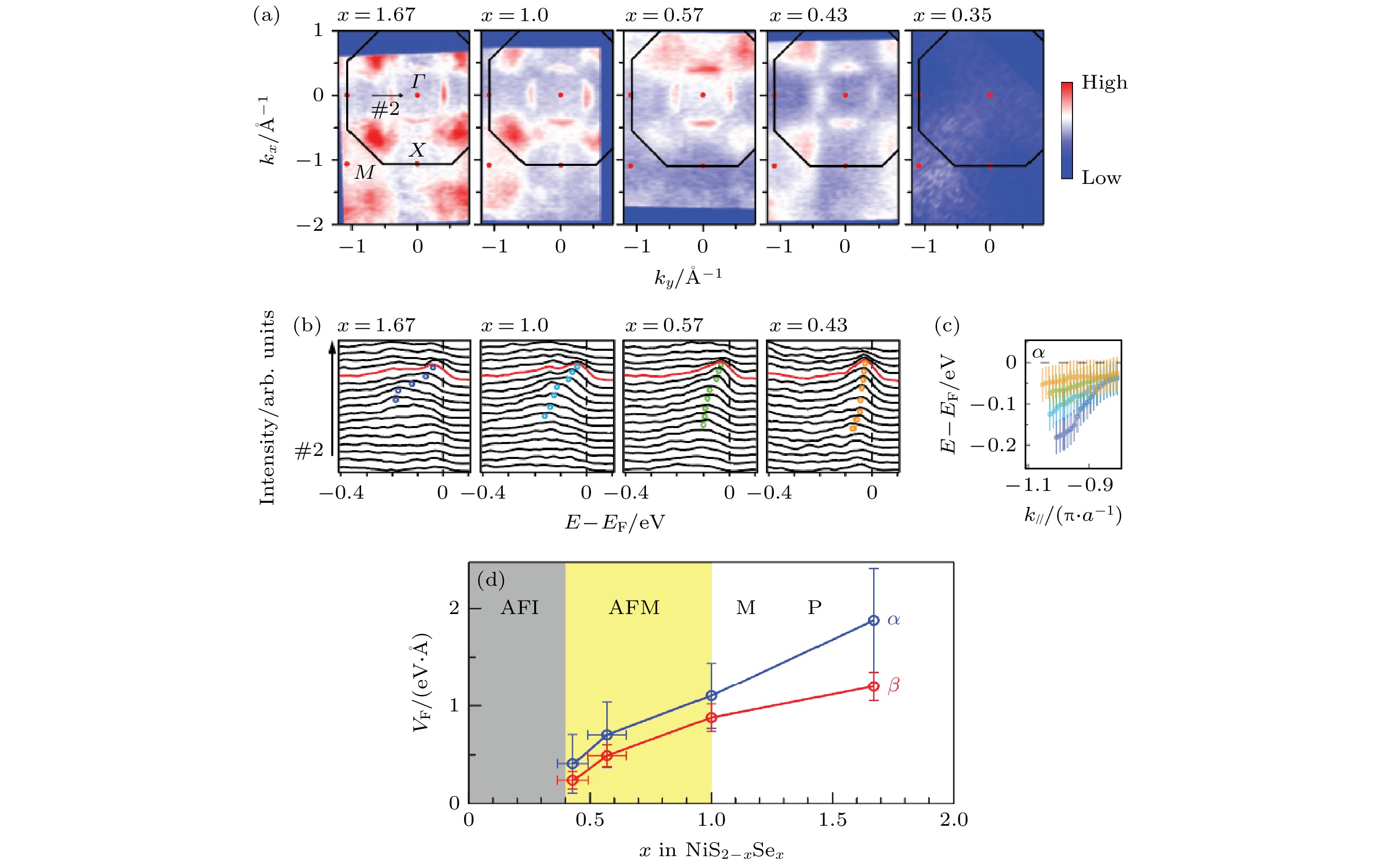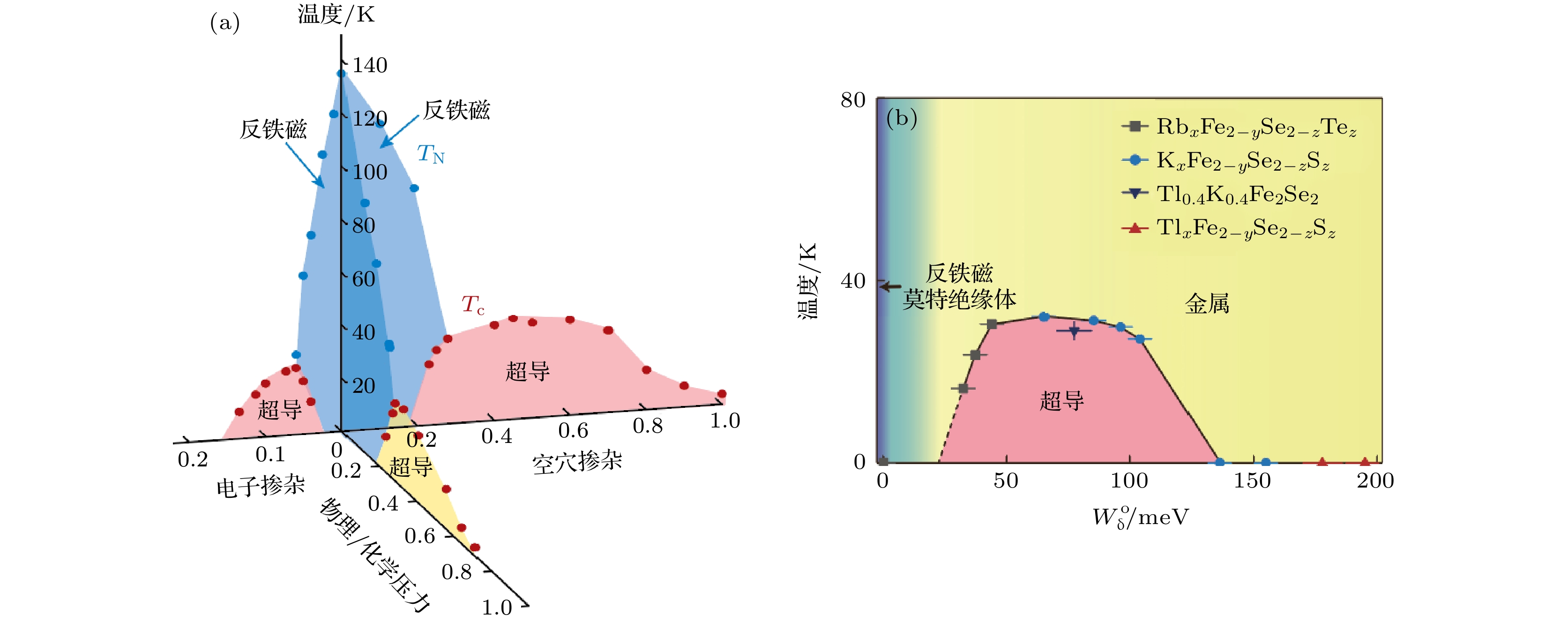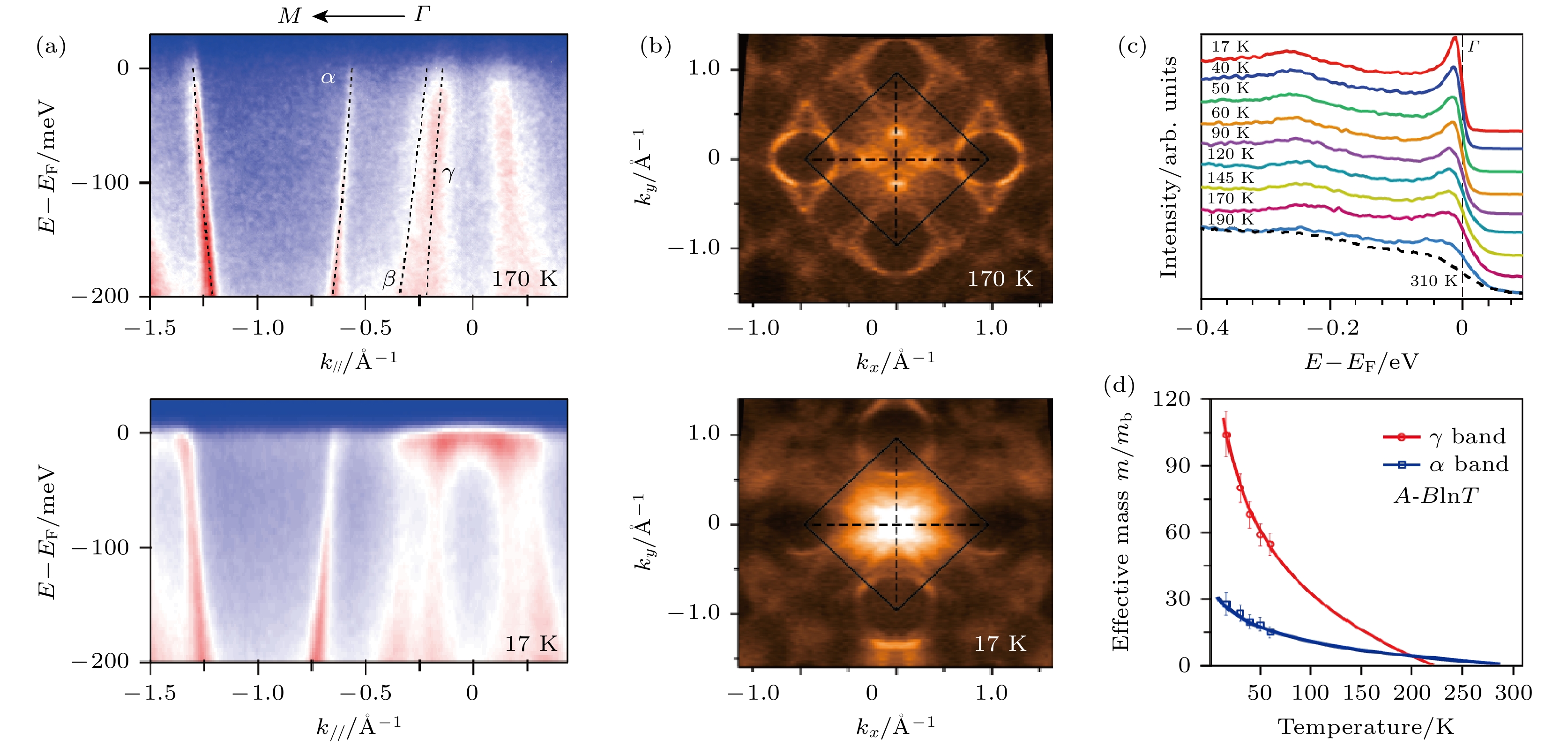-
The competition and cooperation between the itinerancy behavior and localization behavior of electrons in correlated quantum materials, known as Mott physics, is the physical mechanism behind the diverse states of many quantum materials. This article reviews the manifestation of Mott physics in various quantum materials and establishes it as one of the main themes of quantum materials. Finding and understanding its ever-changing ways of manifestation is one of the central tasks of experimental research on condensed matter physics. Specifically, the filling-control route of Mott transition is illustrated by exampling the surface K-dosed Sr2IrO4, which exhibits d-wave gap, pseudogap behavior in underdoped regime, and phase separation with inhomogeneous electronic state distribution. All of these show strong resemblances to the doped cuprate superconductors, another prototypical filling-control type of Mott transition case. On the other hand, the bandwidth-control route of Mott transition could be found in NiS2–xSex, where its bandwidth continuously decreases with decreasing Se concentration, until it becomes an insulator. In addition, the essence of various ways of doping in iron-based superconductors is to change their bandwidths. The superconductivity shows up at intermediate bandwidth with moderate correlations, and it diminishes when the bandwidth is large and the electron correlations are weak. For heavily electron-doped iron-selenides, there is even a Mott insulator phase with strong correlations. For carbon based materials, the phase transition between the antiferromagnetic insulator and superconducting state of A15 Cs3C60 as the volume of fullerene anions decreases could be understood in terms of a bandwidth-control Mott transition; the insulator-superconductor transition discovered in electrically gated “magic angle” twisted-angle bilayer graphene could be understood as a filling-control Mott transition. For f electron systems, the interplay between itinerancy and localization dominates the heavy fermion behavior and their ground states. The behaviors of the f electrons are demonstrated by using the angle-resolved photoemission data of CeCoIn5, whose f electron band becomes more coherent with decreasing temperature, and the c-f hybridization is thus enhanced and the band mass of conduction band continuously increases. The c-f hybridization behaviors of CeCoIn5, CeIrIn5, and CeRhIn5 are compared with each other, and the differences in hybridization strength put their ground states into different regimes of the Doniach phase diagram. Similarly, the Skutterudites 4f2 Kondo lattice system PrOs4Sb12 and its sibling 4f1 system CeOs4Sb12 also have different ground states due to a slight difference in their c-f hybridization strengths. -
Keywords:
- Mott transition /
- Hubbard model /
- Kondo lattice /
- emergent phenomena
[1] Kotliar G, Savrasov S Y, Haule K, Oudovenko V S, Parcollet O, Marianetti C A 2006 Rev. Mod. Phys. 78 865
 Google Scholar
Google Scholar
[2] Kim B J, Jin H, Moon S J, Kim J Y, Park B G, Leem C S, Yu J, Noh T W, Kim C, Oh S J, Park J H, Durairaj V, Cao G, Rotenberg E 2008 Phys. Rev. Lett. 101 076402
 Google Scholar
Google Scholar
[3] Wang F, Senthil T 2011 Phys. Rev. Lett. 106 136402
 Google Scholar
Google Scholar
[4] Yan Y J, Ren M Q, Xu H C, Xie B P, Tao R, Choi H Y, Lee N, Choi Y J, Zhang T 2015 Phys. Rev. X 5 041018
[5] Kim Y K, Krupin O, Denlinger J D, Bostwick A , Rotenberg E, Zhao Q, Mitchell J F, Allen J W, Kim B J 2014 Science 345 187
 Google Scholar
Google Scholar
[6] Yao X, Honig J M, Hogan T, Kannewurf C, Spalek J 1996 Phys. Rev. B 54 17469
 Google Scholar
Google Scholar
[7] Xu H C, Zhang Y, Xu M, Peng R, Shen X P, Strocov V N, Shi M, Kobayashi M, Schmitt T, Xie B P, Feng D L 2014 Phys. Rev. Lett. 112 087603
 Google Scholar
Google Scholar
[8] Zhang X Y, Rozenberg M J, Kotliar G 1993 Phys. Rev. Lett. 70 1666
 Google Scholar
Google Scholar
[9] Brinkman W F, Rice T M 1970 Phys. Rev. B 2 4302
 Google Scholar
Google Scholar
[10] Mazin I I, Schmalian J 2009 Physica C 469 614
 Google Scholar
Google Scholar
[11] Kuroki K, Onari S, Arita R, Usui H, Tanaka Y, Kontani H, Aoki H 2008 Phys. Rev. Lett. 101 087004
 Google Scholar
Google Scholar
[12] Scalapino D J 2012 Rev. Mod. Phys. 84 1383
 Google Scholar
Google Scholar
[13] Seo K J, Bernevig A, Hu J P 2008 Phys. Rev. Lett. 101 206404
 Google Scholar
Google Scholar
[14] Shibauchi T, Carrington A, Matsuda Y, Langer J S 2014 Annu. Rev. Condens. Matter Phys. 5 113
 Google Scholar
Google Scholar
[15] Ye Z R, Zhang Y, Chen F, Xu M, Jiang J, Niu X H, Wen C H P, Xing L Y, Wang X C, Jin C Q, Xie B P, Feng D L 2014 Phys. Rev. X 4 031041
 Google Scholar
Google Scholar
[16] Niu X H, Chen S D, Jiang J, Ye Z R, Yu T L, Xu D F, Xu M, Feng Y, Yan Y J, Xie B P, Zhao J, Gu D C, Sun L L, Mao Q, Wang H, Fang M, Zhang C J, Hu J P, Sun Z, Feng D L 2016 Phys. Rev. B 93 054516
 Google Scholar
Google Scholar
[17] Takabayashi Y, Ganin A Y, Jeglic P, Arcon D, Takano T, Iwasa Y, Ohishi Y, Takata M, Takeshita N, Prassides K, Rosseinsky M J 2009 Science 323 1585
 Google Scholar
Google Scholar
[18] Cao Y, Fatemi V, Demir A, Fang S, Tomarken S L, Luo J Y, Sanchez-Yamagishi J D, Watanabe K, Taniguchi T, Kaxiras E, Ashoori R C, Jarillo-Herrero P 2018 Nature 556 80
 Google Scholar
Google Scholar
[19] Cao Y, Fatemi V, Fang S, Watanabe K, Taniguchi T, Kaxiras E, Jarillo-Herrero P 2018 Nature 556 43
 Google Scholar
Google Scholar
[20] Shim J H, Haule K, Kotliar G 2007 Science 318 1615
 Google Scholar
Google Scholar
[21] Chen Q Y, Xu D F, Niu X H, Jiang J, Peng R, Xu H C, Wen C H P, Ding Z F, Huang K, Shu L, Zhang Y J, Lee H, Strocov V N, Shi M, Bisti F, Schmitt T, Huang Y B, Dudin P, Lai X C, Kirchner S, Yuan H Q, Feng D L 2017 Phys. Rev. B 96 045107
 Google Scholar
Google Scholar
[22] Doniach S 1977 Physica B+C 91 231
 Google Scholar
Google Scholar
[23] Chen Q Y, Xu D F, Niu X H, Peng R, Xu H C, Wen C H P, Liu X, Shu L, Tan S Y, Lai X C, Zhang Y J, Lee H , Strocov V N, Bisti F, Dudin P, Zhu J X, Yuan H Q, Kirchner S, Feng D L 2018 Phys. Rev. Lett. 120 066403
 Google Scholar
Google Scholar
[24] Lou X, Yu T L, Song Y H, Wen C H P, Wei W Z, Leithe-Jasper A, Ding Z F, Shu L, Kirchner S, Xu H C, Peng R, Feng D L 2021 Phys. Rev. Lett. 126 136402
 Google Scholar
Google Scholar
-
图 2 (a) 一维氢原子链模型; (b) 哈伯德能带示意图, 下哈伯德带(lower Hubbard band, LHB)是填满的, 上哈伯德带(upper Hubbard band, UHB)是空带; (c)二维哈伯德模型
Fig. 2. (a) One dimensional hydrogen atom chain model; (b) the schematic illustration of Hubbard bands, where the lower Hubbard band (LHB) is filled, and the upper Hubbard band (UHB) is empty; (c) two-dimensional Hubbard model.
图 3 (a) 莫特相变的两种途径. 考虑杂质局域势场影响以及有限体系尺寸, 相图中的绝缘态随着掺杂的相转变边界是位于有限的掺杂浓度下的. (b) 动力学平均场计算模拟出的Hubbard模型, 在T = 0时, 不同强度U下的局域谱函数展示了带宽调控莫特相变的过程 (D = W/2, W是能带宽度)[1]
Fig. 3. (a) Two routes of Mott phase transition. Considering the influence of impurity local potential and the finite system size, the phase boundary is located at a finite doping concentration. (b) The spectral functions of the Hubbard model calculated by dynamic mean field theory at different U (T = 0), demonstrating the process of bandwidth-control Mott phase transition (D =W/2, W being the bandwidth) [1].
图 4 (a) 考虑自旋轨道耦合和Hubbard U情况下, 5d5态的能级示意图, 展示了总角动量Jeff = 1/2的莫特绝缘体基态; (b) 0.5 ML (monolayer) 钾原子覆盖下的Sr2IrO4的费米面结构 (T = 70 K) [5]; (c) 不同掺杂量的钾原子覆盖下的Sr2IrO4的能隙随动量(费米面角)的依赖关系[5]; (d) 0.6 ML钾原子覆盖下的Sr2IrO4表面的电子态在E = 20 meV下的分布图(T = 20 K), 展示了不均匀的能隙分布情况[4]; (e) 图(d)中不同区域的典型隧道谱[4]
Fig. 4. (a) Schematic diagram of the 5d5 states, considering spin orbit coupling and Hubbard U, where the ground state is a Mott insulator with a total angular momentum of Jeff = 1/2; (b) the Fermi surface of Sr2IrO4 covered by 0.5 ML (monolayer) potassium atoms (T = 70 K)[5]; (c) the energy gap as a function momentum (Fermi surface angle) for K-dosed Sr2IrO4 with different potassium coverages[5]; (d) the local electronic density-of-states map at E = 20 meV for the Sr2IrO4 surface covered by 0.6 ML potassium atoms shows an uneven distribution of energy gaps (T=20 K)[4]; (e) typical tunnelling spectra in different regions in Figure (d)[4].
图 5 (a) ARPES测得NiS2–xSex的费米面随着Se掺杂的演化[7]; (b) ARPES能谱展示能带色散随着Se掺杂的演化[7]; (c) 图(b)中的α能带宽度随掺杂演化的对比[7]; (d) NiS2–xSex两个能带的费米速度在掺杂相图中的演化, 在接近莫特绝缘相过程中呈现带宽变窄、有效质量发散的行为[7]
Fig. 5. (a) ARPES data of the Fermi surface of NiS2–xSex as Se doping is varied[7]; (b) ARPES spectra show that the band dispersion changes with Se doping[7]; (c) summary of the band width evolution with doping in figure (b)[7]; (d) the evolution of the Fermi velocities of two bands of NiS2–xSex in the phase diagram as a function of doping, showing a narrowing bandwidth and effective mass divergence near the Mott insulating phase [7].
图 7 (a) A15 Cs3C60 (晶体群Pm3n)的晶体结构, 其中取向有序的${\mathrm{C}}_{60}^{3-} $阴离子按照体心立方的结构堆叠, 红色为Cs+阳离子[17]; (b) A15 Cs3C60加压后的相图, 显示了反铁磁与超导相变温度随着富勒烯阴离子体积的演化[17]
Fig. 7. (a) The crystal structure of A15 Cs3C60 (crystal group Pm3n), where ${\mathrm{C}}_{60}^{3-} $ anions with an ordered orientation are stacked in a body centered cubic structure, and Cs+ cations are shown in red[17]; (b) the phase diagram of A15 Cs3C60 under pressure shows the evolution of antiferromagnetic and superconducting phase transition temperature with the volume of fullerene anions [17].
图 8 (a) 转角双层石墨烯中的莫尔超晶格[18]; (b) 在转角为“魔角”(θ = 1.08°)时双层石墨烯的能带结构, 在费米能附近看到平带(蓝色曲线)[18]; (c) “魔角” 双层石墨烯中调控电荷浓度得到的相图, 在半填充的莫特绝缘相附近存在两个超导的拱形区域[19]
Fig. 8. (a) Moiré superlattice in twisted-angle bilayer graphene[18]; (b) the calculated band structure of the twisted bilayer graphene at the magic twisted angle (θ = 1.08°), exhibiting a flat band (blue curve) near the Fermi energy[18]; (c) the phase diagram of “magic angle” twisted bilayer graphene as a function of charge concentration, there are two superconducting domes near the half-filled Mott insulator phase[19].
图 9 (a) CeCoIn5高低温的能带结构对比图, 上图测量温度为170 K, 下图测量温度为17 K[21]; (b) CeCoIn5高低温的费米面对比图, 上图测量温度为170 K, 下图测量温度为17 K[21]; (c) CeCoIn5中Γ点附近4f电子谱重随温度的演化[21]; (d) CeCoIn5中α和γ能带的有效质量与温度的依赖关系[21]
Fig. 9. (a) The band structures of CeCoIn5 at 170 and 17 K, respectively[21]; (b) the Fermi surface maps of CeCoIn5 at 170 and 17 K, respectively[21]; (c) the evolution of 4f electron spectral weight near the Γ point as a function of temperature in CeCoIn5[21]; (d) the effective masses of the α and γ bands of CeCoIn5 as a function of temperature [21].
图 10 (a) Doniach相图, 图中箭头标出了CeCoIn5, CeIrIn5和CeRhIn5在该相图中的大致位置[23]; (b) CeCoIn5, CeIrIn5和CeRhIn5中费米能附近能带杂化行为的对比[23]
Fig. 10. (a) Doniach phase diagram, with arrows indicating the schematic positions of CeCoIn5, CeIrIn5, and CeRhIn5 in the diagram[23]; (b) comparison of the hybridization behavior of the bands near the Fermi energy in CeCoIn5, CeIrIn5, and CeRhIn5 [23].
-
[1] Kotliar G, Savrasov S Y, Haule K, Oudovenko V S, Parcollet O, Marianetti C A 2006 Rev. Mod. Phys. 78 865
 Google Scholar
Google Scholar
[2] Kim B J, Jin H, Moon S J, Kim J Y, Park B G, Leem C S, Yu J, Noh T W, Kim C, Oh S J, Park J H, Durairaj V, Cao G, Rotenberg E 2008 Phys. Rev. Lett. 101 076402
 Google Scholar
Google Scholar
[3] Wang F, Senthil T 2011 Phys. Rev. Lett. 106 136402
 Google Scholar
Google Scholar
[4] Yan Y J, Ren M Q, Xu H C, Xie B P, Tao R, Choi H Y, Lee N, Choi Y J, Zhang T 2015 Phys. Rev. X 5 041018
[5] Kim Y K, Krupin O, Denlinger J D, Bostwick A , Rotenberg E, Zhao Q, Mitchell J F, Allen J W, Kim B J 2014 Science 345 187
 Google Scholar
Google Scholar
[6] Yao X, Honig J M, Hogan T, Kannewurf C, Spalek J 1996 Phys. Rev. B 54 17469
 Google Scholar
Google Scholar
[7] Xu H C, Zhang Y, Xu M, Peng R, Shen X P, Strocov V N, Shi M, Kobayashi M, Schmitt T, Xie B P, Feng D L 2014 Phys. Rev. Lett. 112 087603
 Google Scholar
Google Scholar
[8] Zhang X Y, Rozenberg M J, Kotliar G 1993 Phys. Rev. Lett. 70 1666
 Google Scholar
Google Scholar
[9] Brinkman W F, Rice T M 1970 Phys. Rev. B 2 4302
 Google Scholar
Google Scholar
[10] Mazin I I, Schmalian J 2009 Physica C 469 614
 Google Scholar
Google Scholar
[11] Kuroki K, Onari S, Arita R, Usui H, Tanaka Y, Kontani H, Aoki H 2008 Phys. Rev. Lett. 101 087004
 Google Scholar
Google Scholar
[12] Scalapino D J 2012 Rev. Mod. Phys. 84 1383
 Google Scholar
Google Scholar
[13] Seo K J, Bernevig A, Hu J P 2008 Phys. Rev. Lett. 101 206404
 Google Scholar
Google Scholar
[14] Shibauchi T, Carrington A, Matsuda Y, Langer J S 2014 Annu. Rev. Condens. Matter Phys. 5 113
 Google Scholar
Google Scholar
[15] Ye Z R, Zhang Y, Chen F, Xu M, Jiang J, Niu X H, Wen C H P, Xing L Y, Wang X C, Jin C Q, Xie B P, Feng D L 2014 Phys. Rev. X 4 031041
 Google Scholar
Google Scholar
[16] Niu X H, Chen S D, Jiang J, Ye Z R, Yu T L, Xu D F, Xu M, Feng Y, Yan Y J, Xie B P, Zhao J, Gu D C, Sun L L, Mao Q, Wang H, Fang M, Zhang C J, Hu J P, Sun Z, Feng D L 2016 Phys. Rev. B 93 054516
 Google Scholar
Google Scholar
[17] Takabayashi Y, Ganin A Y, Jeglic P, Arcon D, Takano T, Iwasa Y, Ohishi Y, Takata M, Takeshita N, Prassides K, Rosseinsky M J 2009 Science 323 1585
 Google Scholar
Google Scholar
[18] Cao Y, Fatemi V, Demir A, Fang S, Tomarken S L, Luo J Y, Sanchez-Yamagishi J D, Watanabe K, Taniguchi T, Kaxiras E, Ashoori R C, Jarillo-Herrero P 2018 Nature 556 80
 Google Scholar
Google Scholar
[19] Cao Y, Fatemi V, Fang S, Watanabe K, Taniguchi T, Kaxiras E, Jarillo-Herrero P 2018 Nature 556 43
 Google Scholar
Google Scholar
[20] Shim J H, Haule K, Kotliar G 2007 Science 318 1615
 Google Scholar
Google Scholar
[21] Chen Q Y, Xu D F, Niu X H, Jiang J, Peng R, Xu H C, Wen C H P, Ding Z F, Huang K, Shu L, Zhang Y J, Lee H, Strocov V N, Shi M, Bisti F, Schmitt T, Huang Y B, Dudin P, Lai X C, Kirchner S, Yuan H Q, Feng D L 2017 Phys. Rev. B 96 045107
 Google Scholar
Google Scholar
[22] Doniach S 1977 Physica B+C 91 231
 Google Scholar
Google Scholar
[23] Chen Q Y, Xu D F, Niu X H, Peng R, Xu H C, Wen C H P, Liu X, Shu L, Tan S Y, Lai X C, Zhang Y J, Lee H , Strocov V N, Bisti F, Dudin P, Zhu J X, Yuan H Q, Kirchner S, Feng D L 2018 Phys. Rev. Lett. 120 066403
 Google Scholar
Google Scholar
[24] Lou X, Yu T L, Song Y H, Wen C H P, Wei W Z, Leithe-Jasper A, Ding Z F, Shu L, Kirchner S, Xu H C, Peng R, Feng D L 2021 Phys. Rev. Lett. 126 136402
 Google Scholar
Google Scholar
计量
- 文章访问数: 7625
- PDF下载量: 470
- 被引次数: 0














 下载:
下载:









